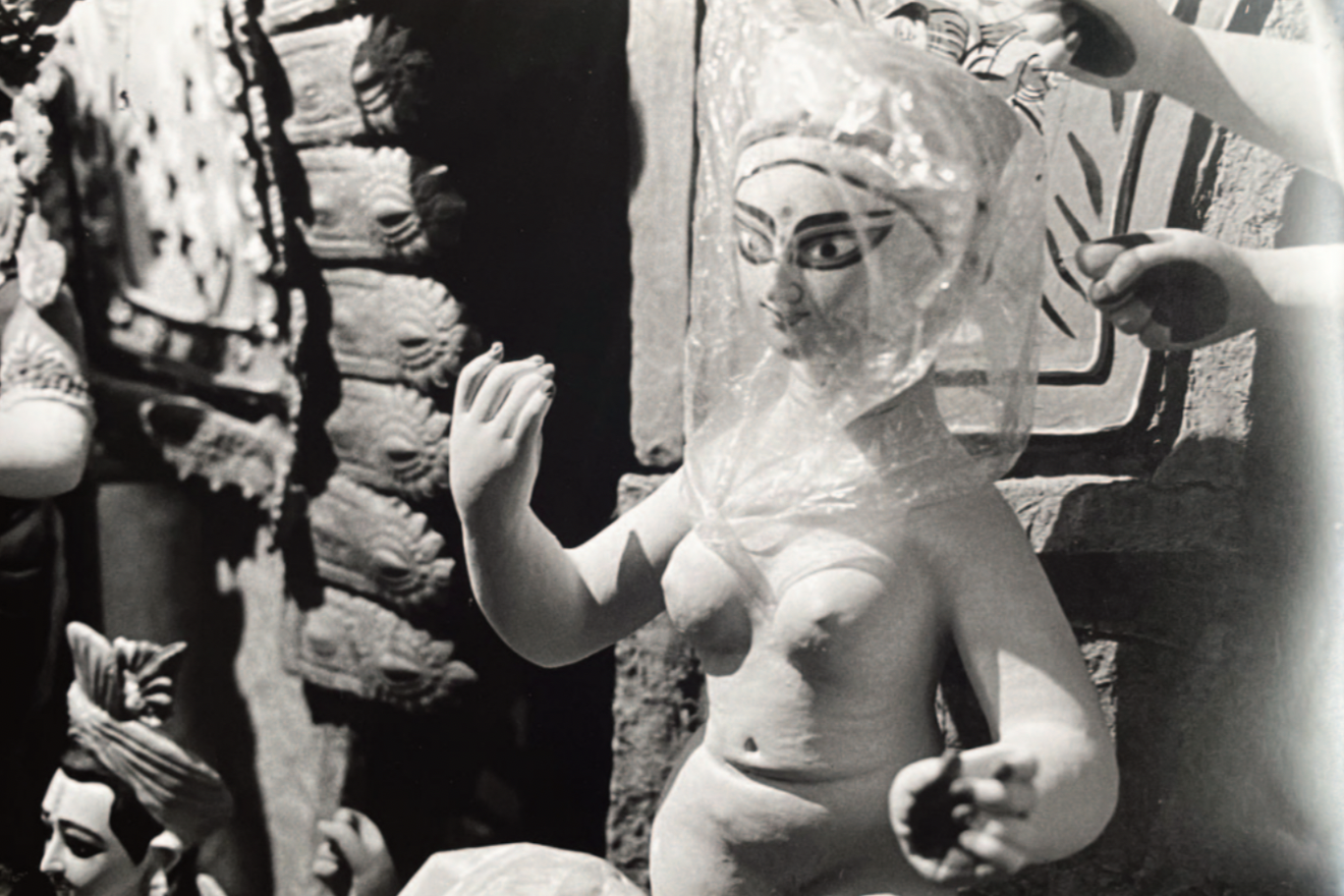“A Maverick Bridging Art and Social Justice ”
written by Naveen Kishore
The Goddess Durga is celebrated each year all over Bengal and in many other parts of India as the motherly power behind all of life and creation. Durga is also worshiped as the goddess who vanquishes the demon Mahishasura who is a deceitful power-hungry demon who pursues his evil ways by shape-shifting. The goddess ultimately kills him with her trident and emerges victorious as the great ‘Slayer of Mahishasura’. The festival epitomizes the victory of good over evil.
The Greenroom of the Goddess project or set of images were originally planned as an attempt to document the preparation and the making of the goddess from the clay of the river Ganges also known as Hooghly which runs through the city of Calcutta. A kind of cycle that a group of artisans in a river-bank colony called Kumartuli are engaged in year after a year.
Kumartuli, a little picture-book set of tiny lanes in North Calcutta, on the banks of the river Hooghly is ‘almost a village’, a home, a working space to traditional artisans, potters, artists who in the old days used to model the clay from the river into pots and who gradually started to create, sculpt, paint images of gods and goddesses into idols for the traditional Durga, Kali, Saraswati pujas in and around Calcutta.
In 2003 I set out to observe and create images of my own. Photographers from all over the world have made this journey. My only brief to myself was to take photographs that suggest an intimacy that can only come when the subject is unaware of the camera. Using old-fashioned analogue Nikon cameras. Transparency film. Shy, hesitant, almost as if through a keyhole, often not raising the camera viewfinder to my eye, instead preferring to shoot from the waist.
Hurriedly attempting to capture the process, the preparation, the ‘backstage’ activity that goes on each year before that final moment of anointment when the clay ‘becomes’ goddess to be worshiped across thousands of community pujas across the city.
Four days later she will return to a grand drowning. For me this practice of taking the clay from the river and breathing not just life but a ‘god-like’ spirit into the idols these artisans create is fascinating. These particular silver prints take a portion of my photographs and divide them into what I call ‘Arrivals’ and ‘Departures’.
I focus here on the clay being shaped into goddess but not quite anointed. Yet. And then fast-forwarding to the post-anointment post-worship event, spectacle, carnival and then finally post-immersion images when the idols are immersed after four days of worship.
Departures. Awaiting another cycle of rebirth?



















Born in Calcutta in 1953, Naveen Kishore received his Bachelor of Arts degree in English Literature in 1973, and began working as a theatre lighting designer. He established Seagull Books in 1982, a publishing program in the arts and media focusing on drama, film, art and culture studies. Today, it also publishes literature, including poetry, fiction and non-fiction. In 1987 Kishore established The Seagull Foundation for the Arts, under the auspices of which he set up The Seagull School of Publishing in 2012.
Kishore is a photographer who has extensively documented female impersonators from Manipuri, Bengali and Punjabi theatre practices. In particular he photographed Chapal Bhaduri, a female impersonator of the Bengali folk theatre, Jatra, in a project entitled Performing the Goddess. Some of these pictures were exhibited as a part of a show titled Woman/Goddess. More recently in 2019 his suite of colour images from the Performing the Goddess project were exhibited at the Vancouver Art Gallery as a part of the Moving Still exhibition. More recently, Kishore exhibited his work at Chatterjee & Lal in Bombay in the exhibition Greenroom of the Goddess. His performance photographs from Manipur entitled The Epic and the Elusive, curated by Ranjit Hoskote were exhibited in in May, 2022 in Mumbai at the Cymroza Art Gallery. More recently three bodies of his work including the post-Godhra in Gujarat images were exhibited at Emami in Calcutta under the title In a Cannibal Time.
Kishore is the recipient of the Goethe Medal, a Chevalier de l’Ordre des Arts et des Lettres and was awarded the 2021 Ottaway Award for the Promotion of International Literature. Recently this year he became the first recipient of the Cesare De Michelis Prize, awarded to a publisher who has distinguished himself/herself internationally through the development of outstanding publishing projects.
Kishore has had his poems published with Scroll.in, Queen Mob’s Tea House, Beltway Poetry Quarterly, Another Chicago Magazine, RIC Journal, Gargoyle, Poetry at Sangam, Sylph Editions, London amongst others. Naveen has recently published his first two books of poems, Knotted Grief and Mother Muse Quintet.
Kishore lives and works in Calcutta, India.



